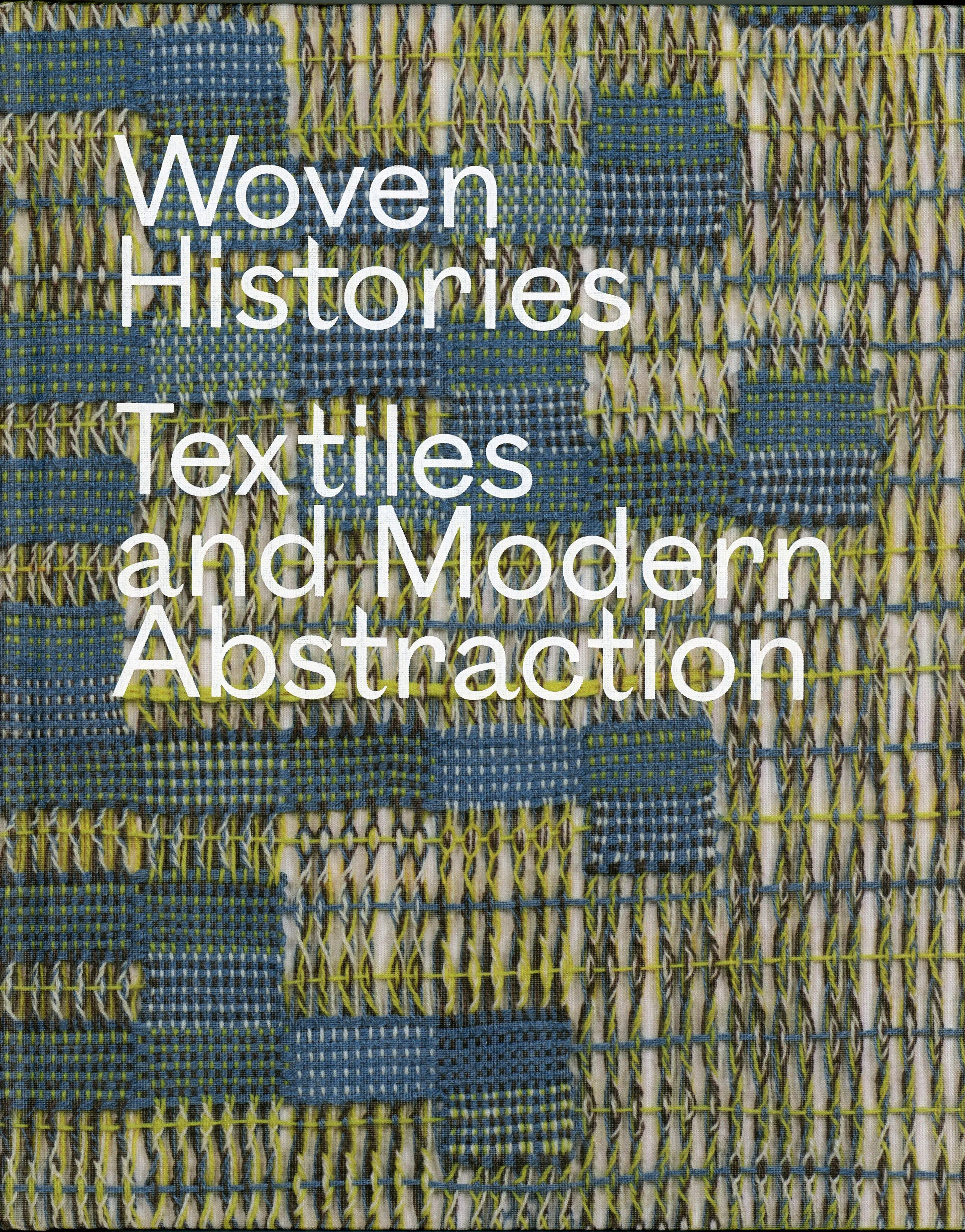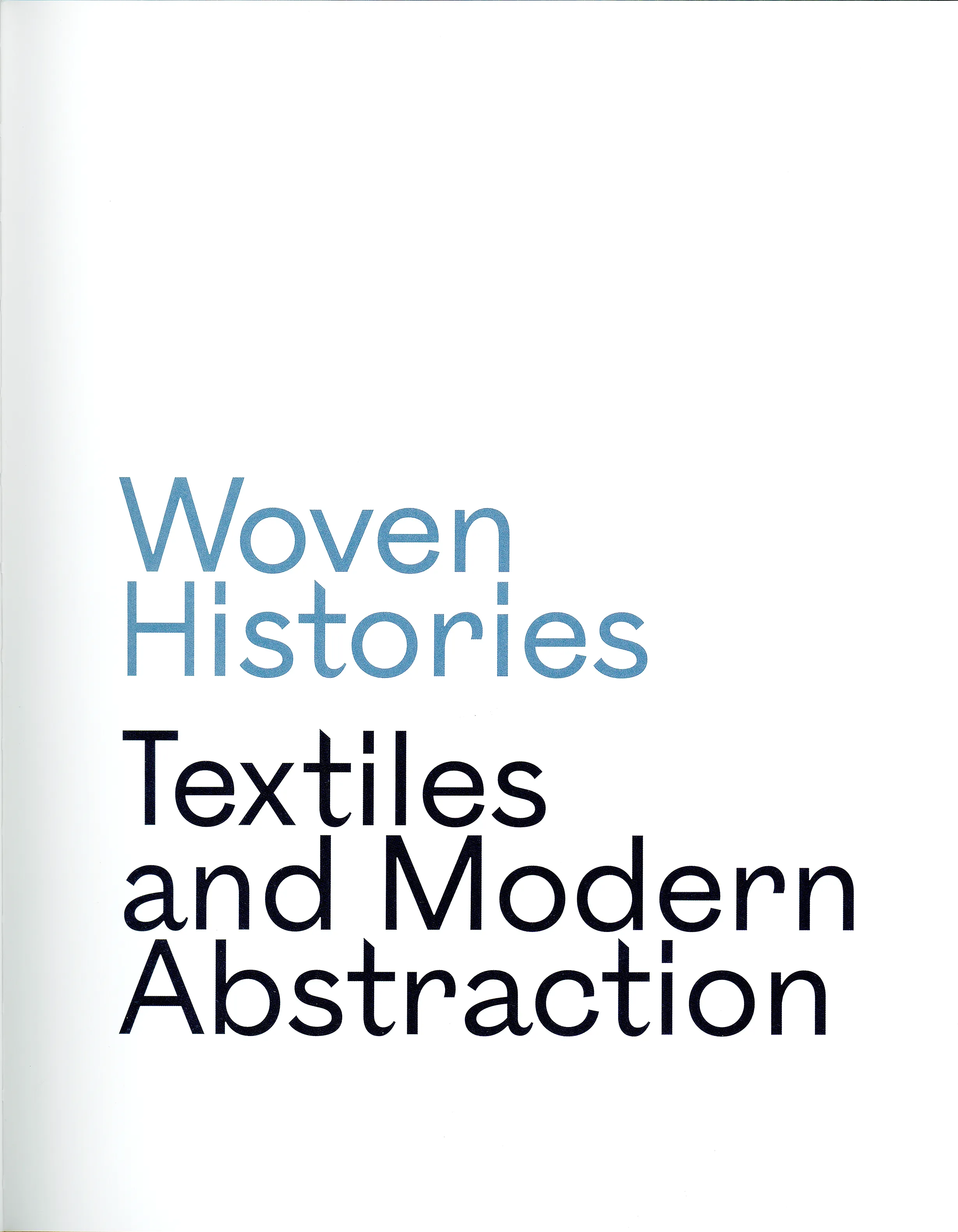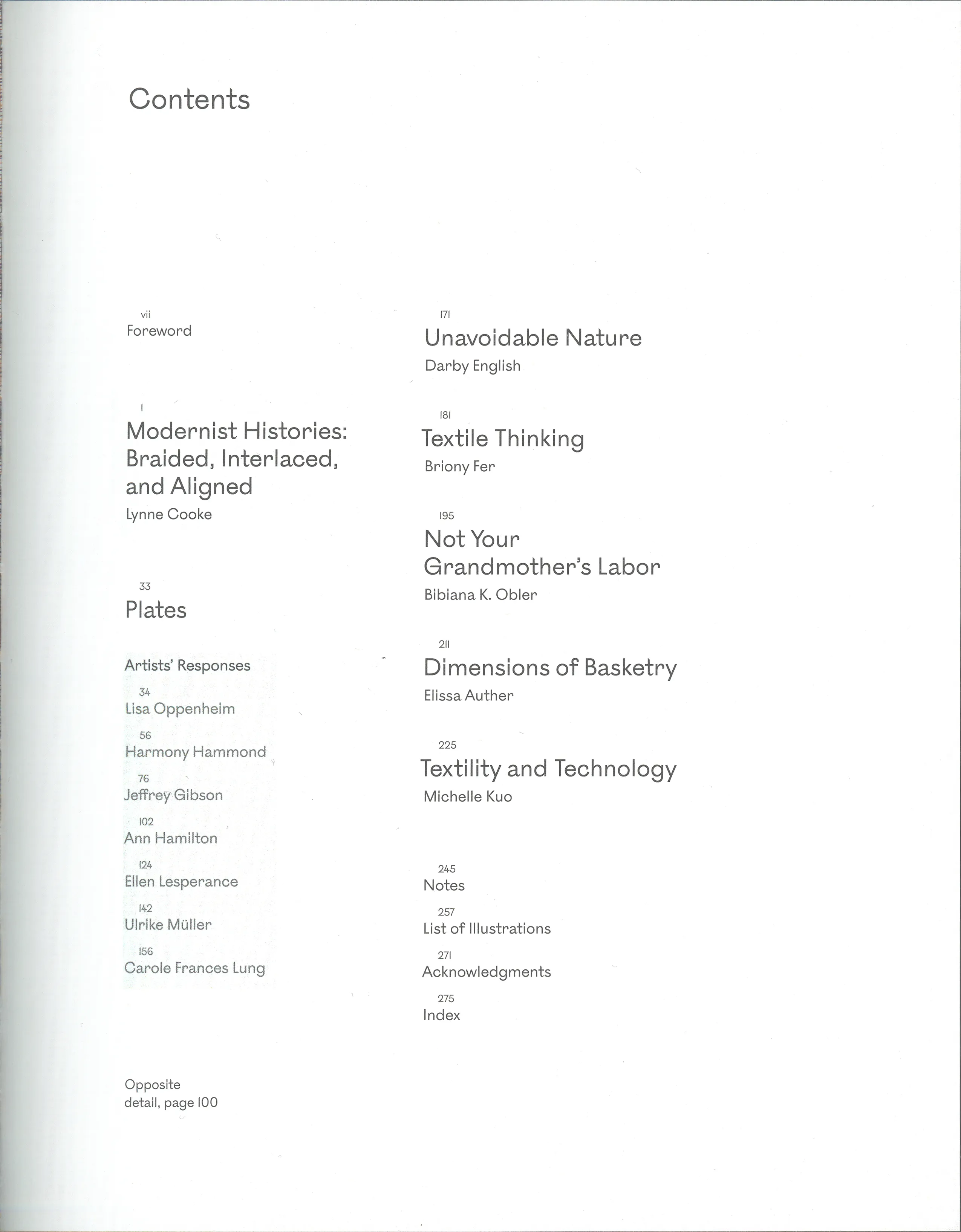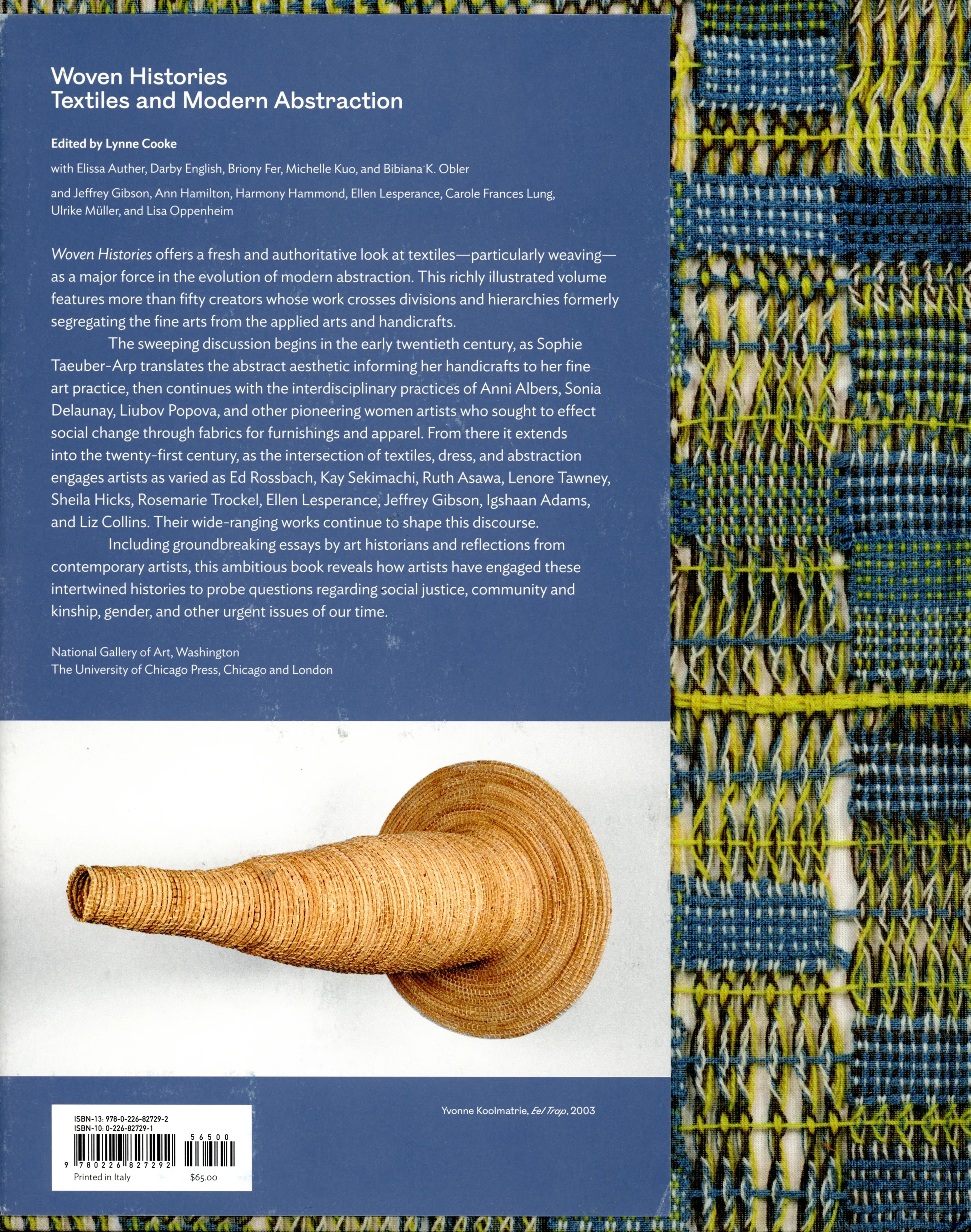Publicaciones
Woven Histories. Textiles and Modern Abstraction.
National Gallery of Art, Washintong.The University of Chicago Press.
2023
Diseño: Brad Ireland
Textos: Lynne Cooke, Elissa Auther, Darby English, Briony Fer, Michelle Kuo, Bibiana K. Obler, Jeffrey Gibson, Ann Hamilton, Harmony Hammond, Ellen Lesperance, Carole Frances Lung, Ulrike Muller y Lisa Oppenheim.
Textos
- Teresa Lanceta´s Adiós al rombo, rosas blancas - Ulrike Müller
Teresa Lanceta´s Adiós al rombo, rosas blancas
Teresa Lanceta exhibits her work Cojín /-IV (1999; page 153) alongside the "original cojín," a woven Moroccan pillowcase acquired by the artist and brought to her studio. Lanceta presents her work as a translation of sorts, replicating the dimension s of the cojín four times, her pieces picking up on the color palette and formal language of the original, moving them around. In the gallery, Lanceta's wall hangings and the cojín, woven by a woman who remains unnamed, are displayed side by side, two artifacts made by hand in different places and under different circumstances.
Lanceta's translation does not spell out the symbolic meaning or intended uses of the Moroccan textile. Instead it celebrates the beauty and vitality of the object, its proximity to bodies, and its use value in daily life. As I strain to grasp the space between the cojín and Lanceta's work I am reminded of bilingual editions of poetry books, where two languages sit next to each other. For those who speak both languages, the translator's decisions will become apparent, but also shifts and failures between the two languages, as well as things that cannot be transposed. Here, however, the space between the two throws me back into my cultural and historical place, acutely aware of the limitations of what I can access and put into words.
To me, the "original cojín" is opaque — I know nothing of the weaver's intentions for this particular piece — yet also familiar. Moroccan tribal textiles have long fascinated Europeans and now, made only more popular and more accessible by the internet, can be found in many homes across the globe, including my living room in New York City. Moroccan rugs, blankets, and pillows also sit squarely in modernist architecture, where their role is to soften and play off the rationalism of the design, imbuing it with a sense of cosmopolitan homeyness — for example in houses by Le Corbusier, Frank Lloyd Wright, and Charles and Ray Eames, to just name a few. Then and now, the weavers of spectacular pieces most often remain unnamed, underappreciated, and underpaid.
Adiós al rombo, rosas blancas (2015), also by Lanceta, does not spell out its lineage quite so directly. From the lower corners, two diagonal bands reach into this woven image, as if to set a shallow stage. In the interplay of narrow stripes and hovering diamond shapes, a veil of primary color sits as if atop a natural palette, resulting in a kind of transparency and a double image that speaks of traditional textiles as well as their modernist appropriations.
The rhombus, made entirely of diagonals, cuts across the warp, thus embedding the pattern in the fabric. (In weft-faced tapestry weaving, a vertical line equals a break in structural continuity and results in a slit.) Lanceta describes the rhombus as a network without coordinates, no center nor frame, just equal parts. As she explained to curator Nuria Enguita Mayo: " The title Adiós al rombo refers to a way of approaching the world that is no longer possible and that is beginning to reveal its bitterest side, now that we incorporate the heritage of others while casting off those who created it. Heritage and young people are absorbed by a world where the notion 'what be longs to us' is much easier absorbed than that of 'us.' Farewell to the rhombus, farewell to innocence."
From the loom, Lanceta's practice spins out in to conversations and exchanges, among others with North African immigrants. I think about the relationship of violent histories, lives under pressure, and the repetitive crossing of threads on the loom, and there are no easy answers. And maybe that is the point. It seems to me that Lanceta's work is demonstrative rather than reparative, staying close to the problems that arise when moving through the world and making connections.



